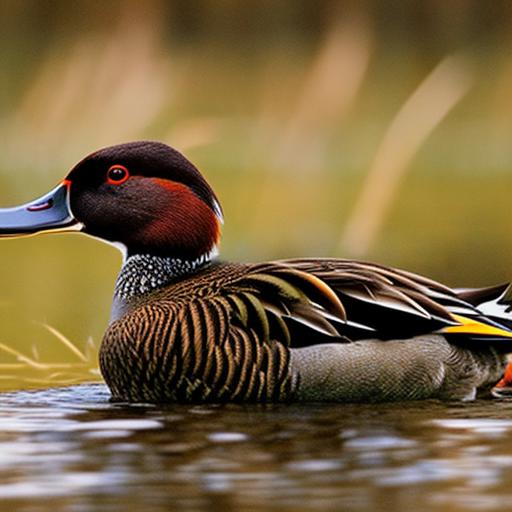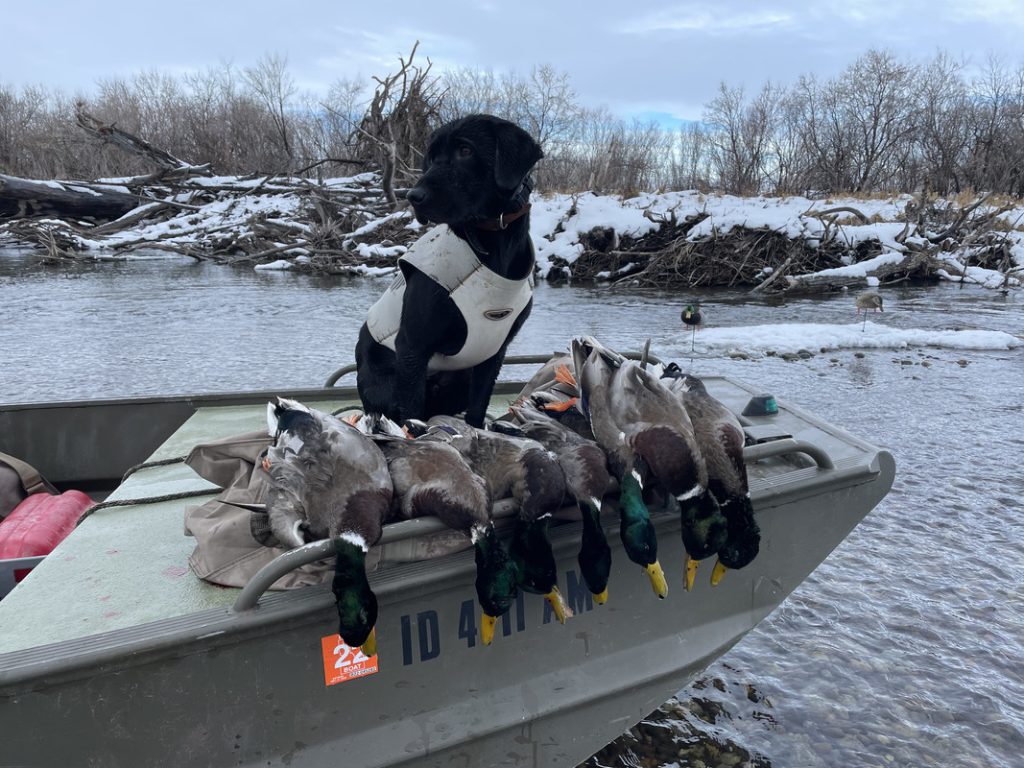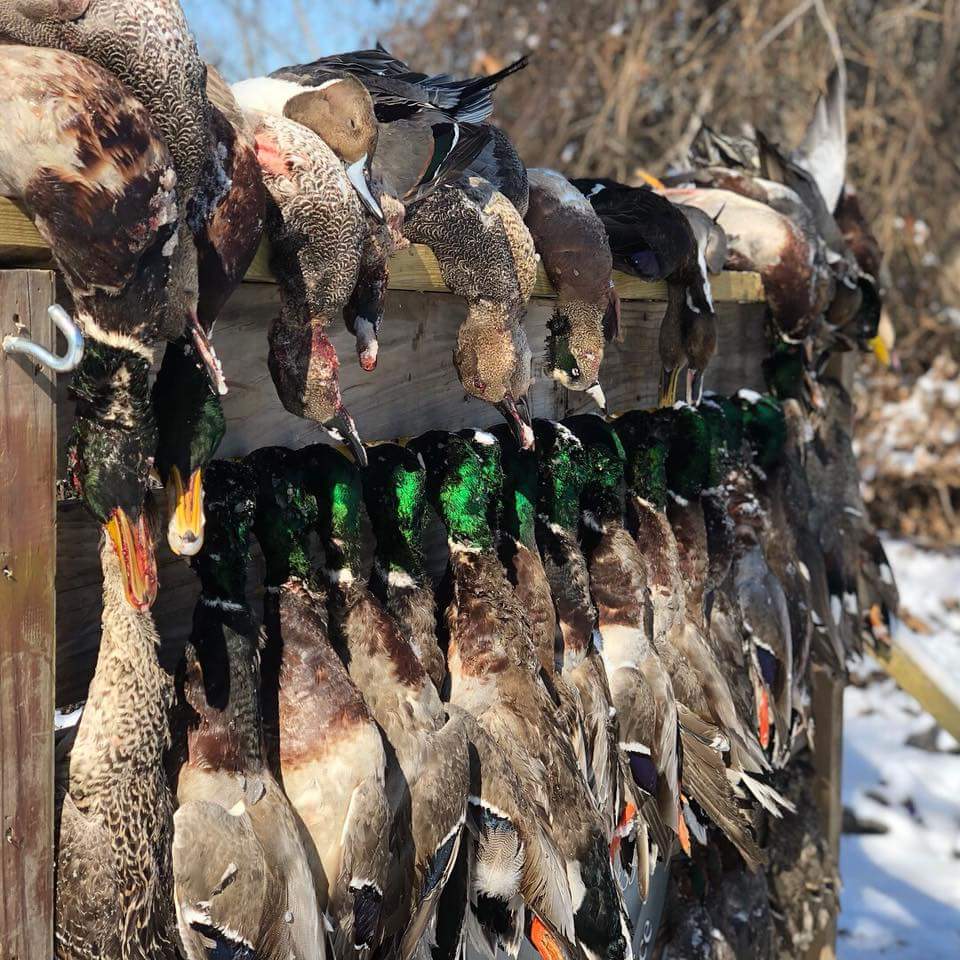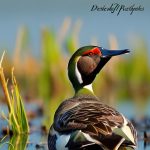Your cart is currently empty!

Master the Art of Duck Hunting: ‘Duck Hunting for Dummies’ Ultimate Guide!

Table of Contents
Introduction
Ah, the thrill of duck hunting! There’s something truly magical about the early morning mist, the sound of ducks in the distance, and the anticipation of a successful hunt. If you’ve ever felt the desire to venture into this world but felt overwhelmed, don’t fret. You’re in the right place, and this guide titled “Master the Art of Duck Hunting: ‘Duck Hunting for Dummies’ Ultimate Guide” is tailor-made for you. Drawing from years of experience chasing small game, I aim to share insights that will be invaluable both for newcomers and seasoned hunters. Duck hunting, much like any other skill, can seem daunting at first. But with the right guidance – think of this as your “duck hunting for dummies” crash course – you’ll soon be navigating the waters (pun intended) like a pro. Whether you’re looking to impress your buddies or simply enjoy the peaceful solitude of a dawn hunt, we’ve got you covered.
The Basics of Duck Hunting
Understanding the Duck Species and Their Habits
Ah, the myriad of ducks! Before venturing out, it’s essential to know your targets. Every duck species has its quirks. For instance, the Mallard, with its iconic green head, often favors marshes and ponds. In contrast, the fast-flying Canvasbacks prefer larger lakes. Getting to know these habits not only increases your chances of a successful hunt but also deepens your connection with nature. After all, “duck hunting for dummies” isn’t just about shooting; it’s about understanding and respecting your quarry.
Best Times of the Day and Year for Duck Hunting
Now, when it comes to timing, dawn and dusk are your best friends. These twilight hours are when ducks are most active, heading out to feed or returning to roost. Be in position before the sun’s first rays hit the horizon or as the day’s light fades. Trust me, there’s nothing like the serenity of a marsh at dawn, punctuated by the occasional quack.
Annual timing matters too. While it varies by region, generally the cooler months of fall and winter are peak duck hunting seasons. This is when migration is in full swing. Speaking of which…
The Significance of Migration Patterns
Migration is like the Super Bowl of duck hunting. Every year, ducks journey thousands of miles between breeding and wintering grounds. These patterns can predictably lead them right to your hunting spot – if you’re in the know. The significance? If you time it right and position yourself along these migratory routes, the action can be non-stop. Key factors influencing migration include food availability, weather patterns, and habitat conditions. It’s worth noting that during major migration periods, you’ll see a diverse mix of species. So, that “duck hunting for dummies” guide you’ve got? Keep it handy to identify your feathered friends on the fly.
The deeper you dive into the world of duck hunting, the more fascinating it becomes. There’s a rhythm to nature, a cadence to the ducks’ behaviors and migrations. And with this foundational knowledge, you’re well on your way to mastering the art. Happy hunting!
Essential Gear and Equipment
Importance of the Right Equipment: From Decoys to Duck Calls
Alright, fellow hunter, let’s chat gear. Now, as any seasoned hunter will tell you, the right equipment can make or break a duck hunt. Think of it as an artist having the right tools to paint a masterpiece. For duck hunting, decoys and duck calls are at the heart of this art. Quality decoys, strategically placed, can attract ducks right into your line of sight. As for duck calls, they’re your vocal paintbrush, replicating the varied sounds of ducks to lure them closer. And let’s be real: there’s an undeniable thrill in successfully calling a duck in. As you delve deeper into the “duck hunting for dummies” universe, you’ll learn that mastering these tools is crucial for a fruitful hunt.
Recommendations for the Best Shotguns Suitable for Ducks
Now, onto the big guns—literally. When it comes to shotguns, not all are made equal. For ducks, a 12-gauge shotgun is a popular choice, offering a versatile range for various waterfowl. Brands like Remington, Winchester, and Mossberg have been trusted by hunters for decades. If you’re starting, a pump-action model might be the way to go, combining reliability with affordability. However, if you’re looking to invest a bit more, semi-automatics provide quicker follow-up shots. Whichever you choose, ensure it feels comfortable and balanced in your hands. After all, this will be your trusty sidekick in the marsh.
Waterproof Apparel and Other Must-Have Accessories
Here’s the thing about duck hunting: it’s wet. And there’s nothing more miserable than being cold and soggy in a duck blind. Investing in quality waterproof apparel, including waders and jackets, is a game-changer. Brands like Sitka, Drake, and Banded come highly recommended in the waterfowl world. And don’t forget a good waterproof hat!
But wait, there’s more to your gear bag. A pair of binoculars for scouting from afar, a sturdy hunting knife, and a comfortable yet supportive blind bag to carry your essentials are all par for the course. And, if you’re venturing into colder climates, hand and foot warmers can be a real blessing.
In the world of “duck hunting for dummies”, remember: your equipment isn’t just about the tools of the trade, but ensuring comfort and success during those long hours in the wild. Choose wisely, and may your gear serve you well on many a hunting expedition!
Scouting and Setting Up
The Art of Finding the Perfect Hunting Spot
Location, location, location! It’s not just a mantra for real estate agents, but for duck hunters too. Scouting is arguably the most crucial pre-hunt preparation you can do. It’s all about finding where the ducks want to be. Check local ponds, marshes, and lakes a few days before your hunt. Keep an eye out for flight patterns and landing zones. And hey, technology can lend a hand here. Satellite imagery and mapping apps can provide an aerial view of potential hunting grounds. If you’re knee-deep in the “duck hunting for dummies” journey, know this: the more you scout, the better you get at reading the land and water.
Using Natural Vegetation for Concealment
Alright, you’ve found your hotspot. Now, let’s talk stealth mode. Ducks have excellent eyesight. That means if they see or sense you, game over. So, blending into your surroundings is key. Use natural vegetation around you. Brush, reeds, and tall grasses can be your best friends. If you’re in a boat or a blind, cover it with local foliage. The idea is simple: the more you look like the marsh, the less likely ducks will spot you. And if you’re thinking, “I’ve seen camo gear, isn’t that enough?” Well, it’s a start. But nothing beats using nature’s own to truly disappear into the environment.

Setting Up Decoys: Tips for Creating a Realistic and Enticing Spread
Okay, onto the fun stuff: decoys. Think of them as your duck-wingmen, drawing in the real birds to where you want them. But here’s the catch: ducks aren’t easily fooled. Your decoy setup should mimic real-life duck behaviors. Here’s a crash course in “duck hunting for dummies” decoy etiquette:
- Diversity: Use a mix of species, especially ones you’ve seen in the area.
- Spacing: Avoid clutter. Ducks need room to land, so give your decoys some breathing space.
- Movement: In still waters, consider using a jerk cord or a ripple maker to simulate movement.
- Positioning: Face some decoys into the wind and others in various directions to mimic natural behavior.
Remember, the key is realism. Over time, you’ll develop a keen eye for what works and what doesn’t.
There you have it – scouting, concealing, and decoy setup, all in a day’s prep work. These foundational strategies will set you on a path to success in the world of duck hunting. Good luck, and may the ducks be ever in your favor!
Shooting Techniques and Tips
The Importance of Practicing Your Shot
Pulling the trigger might seem like the climax of a hunt, but let’s get one thing straight: it’s an art, not a fluke. As the saying goes, “Practice makes perfect.” Before embarking on your duck hunting adventure, spend some quality time at a shooting range. Familiarize yourself with your shotgun, understand its weight, recoil, and aiming quirks. Trust me, shooting clay pigeons will give you invaluable experience before you’re trying to hit a fast-moving mallard in the wild. By practicing regularly, you’ll not only hone your skills but also ensure a higher chance of ethical shots, where ducks are harvested cleanly and humanely. Remember, in the grand tapestry of “duck hunting for dummies,” a well-practiced shot is worth its weight in gold.
Understanding the Difference Between “Pass Shooting” and “Decoying Ducks”
Alright, let’s delve into some shooting nitty-gritty. When you hear the terms “pass shooting” and “decoying ducks,” it’s not fancy jargon to confuse beginners. They represent two distinct shooting scenarios:
- Pass Shooting: This is all about shooting ducks on the move, typically during their migration routes. It’s a challenge, as it requires impeccable timing and accuracy. You’ll need to lead your shots, anticipating the bird’s trajectory. It’s thrilling, but not for the faint-hearted or shaky-handed.
- Decoying Ducks: Here, you’re shooting ducks attracted to your decoy spread. They’re typically coming in for a landing or circling overhead. These shots are generally closer and, some might argue, more predictable. Still, don’t get too comfy; ducks are agile creatures, and a hovering teal can change direction in a heartbeat!
Safety Tips and Considerations While Shooting
Let’s address the elephant (or should I say duck?) in the room: safety. Guns are tools, not toys. Here are some essential safety guidelines:
- Muzzle Direction: Always be aware of where your gun’s muzzle is pointing. It should never point at anything you don’t intend to shoot.
- Finger Off the Trigger: Until you’re ready to shoot, keep that finger off the trigger and outside the trigger guard.
- Wear Eye & Ear Protection: Shooting can be loud, and stray particles can fly. Protect your peepers and ears.
- Know Your Target: Positive identification is crucial. Ensure you’re shooting at a duck and not another hunter’s decoy or, heaven forbid, another hunter.
Safety isn’t just a section in “duck hunting for dummies”; it’s the undercurrent of every hunt, ensuring you, your hunting buddies, and the environment remain unharmed.
In shooting and in safety, consistency is key. The more you internalize these techniques and precautions, the more second-nature they’ll become. Here’s to accurate and safe shots out there in the marshes!
Ethical Hunting and Conservation
The Importance of Sustainable Hunting
Duck hunting isn’t just about the thrill of the chase or the camaraderie among hunters; it’s also deeply intertwined with respect for nature and the ducks themselves. Sustainable hunting ensures that future generations can experience the same joys and traditions we hold dear today. Overhunting not only disrupts ecosystems but can lead to dwindling populations of our feathered friends. So, while “duck hunting for dummies” might introduce you to the basics, the underlying principle is always sustainability. After all, we’re not just hunters; we’re also stewards of the environment.
Regulations, Bag Limits, and the Hunter’s Responsibility
Now, diving into the specifics: regulations and bag limits aren’t mere suggestions; they’re instrumental in ensuring the survival and thriving of duck populations. Different regions and countries have distinct rules tailored to their unique ecosystems and duck species. Familiarizing oneself with these regulations is not only a legal requirement but also an ethical one.
Bag limits dictate how many ducks you can harvest in a day. While it might be tempting to go beyond, especially on a lucky day, restraint is the name of the game. Remember, today’s restraint ensures tomorrow’s bounty.

Additionally, always possess the necessary hunting licenses and stamps. These often serve a dual purpose: granting permission and funding conservation efforts. In the grand scheme of “duck hunting for dummies,” understanding and abiding by these regulations is the hallmark of a responsible hunter.
Participating in Conservation Efforts and Understanding Their Significance
So, you’ve started your duck hunting journey. Why not take it a step further and contribute actively to conservation efforts? Numerous organizations, like Ducks Unlimited and Delta Waterfowl, work tirelessly to preserve wetlands and habitats crucial for waterfowl.
Joining these organizations or participating in local conservation programs can be immensely fulfilling. You’re not only ensuring a habitat for ducks but also for countless other species that call these wetlands home.
Moreover, understanding the significance of these efforts broadens your perspective. It’s not just about preserving a hunting ground but also about maintaining the delicate balance of our ecosystems. Wetlands act as nature’s water filters, flood controls, and are biodiversity hotspots. So, in essence, conserving them has a ripple effect, benefitting both nature and communities.
Related Questions
What is the best shotgun choke for duck hunting?
Hey there, fellow duck enthusiast! When it comes to chokes, the best bet for duck hunting is usually a modified or full choke. This tightens your shotgun’s shot pattern, helping you nail those ducks at a moderate to long range. If you’re shooting over decoys, though, consider using an improved cylinder. Always match your choke with the shooting situation. Remember, practice with different chokes to find your sweet spot!
How can one distinguish between different species of ducks in flight?
Great question! Identifying ducks mid-flight can be tricky but super rewarding. First, take note of size and wingbeat speed. For instance, teal ducks are smaller and have rapid wingbeats. Next, look for color patterns on the wings, tail, or body. Mallards often showcase a white-bordered blue speculum (wing patch), while pintails have slender bodies and long necks. Silhouette, flight style, and flock formation can also be telltale signs. Over time, you’ll develop a keen eye!
What’s the role of a hunting dog in duck hunting?
Ah, our trusty four-legged companions! In duck hunting, they play a pivotal role. Primarily, hunting dogs retrieve downed ducks from water or thick cover, saving you time and ensuring a humane harvest. Breeds like Labradors and Chesapeake Bay Retrievers are popular choices. They’re not only skilled swimmers but also have a gentle mouth grip, ensuring the duck remains intact. Plus, their enthusiasm and company are second to none!
How does weather affect duck movement?
Weather plays a sneaky big role in duck behavior. Cold fronts, for instance, push ducks southward during migration. A sudden drop in temperature can kick-start a mass movement. Rain, especially light drizzles, can be a boon, making ducks more active and less wary. Wind direction also matters; ducks often land into the wind. So, while a clear, sunny day might be pleasant for us, a bit of chill and drizzle could be your best bet for a fruitful hunting session!
Summary
Well, fellow adventurers, we’ve navigated through the vast waters of duck hunting together in this guide. With every tip and trick, the goal was simple: to set you on the right path and ensure you’re not just shooting in the dark. Remember, every expert was once a beginner, and with resources like “duck hunting for dummies”, you’re already one step ahead in your journey. As an experienced small game hunter, I’ve had my fair share of missteps and moments of glory. What I’ve aimed to do is pass on the essence of those experiences to you. The key takeaway? Embrace every moment, every challenge, and every duck call. Because, in the end, it’s not just about the hunt, but the memories, stories, and friendships forged along the way. So, gear up, keep this “duck hunting for dummies” wisdom close, and I’ll see you out there in the marshes! Safe hunting!

Herb has been a longtime lover of the outdoors. Whether it be hunting, camping, fishing or just getting outside to reset. Proud father and animal lover. Bourbon anyone?

by
Comments

Categories
- Big Game Hunting (301)
- Deer (202)
- Reviews (3)
- Shooting (16)
- Slingshot (1)
- Small Game Hunting (42)
- Upland Hunting (126)
- Waterfowl Hunting (3)





Leave a Reply